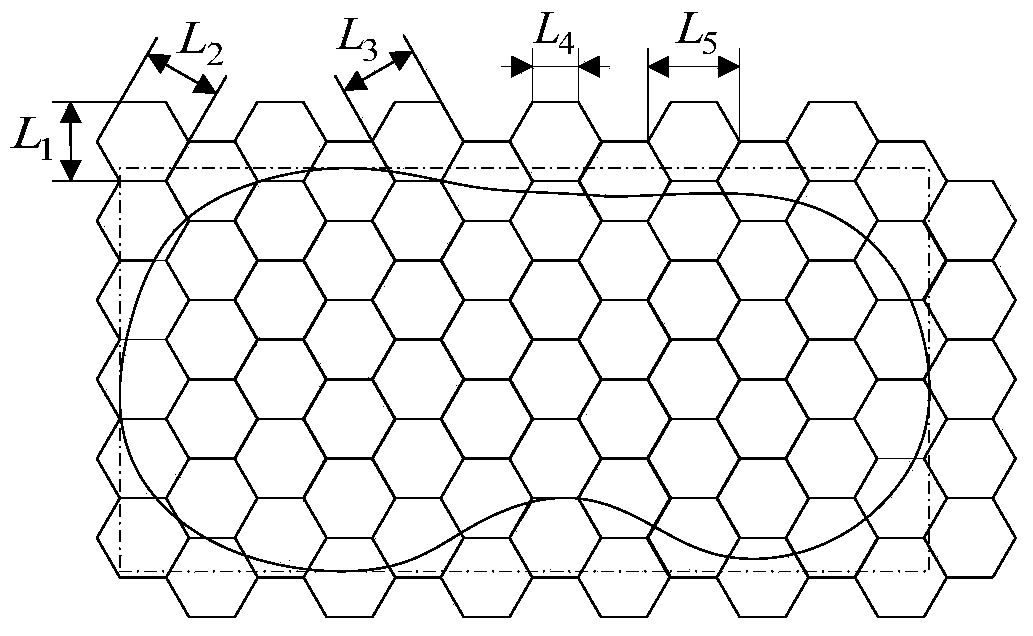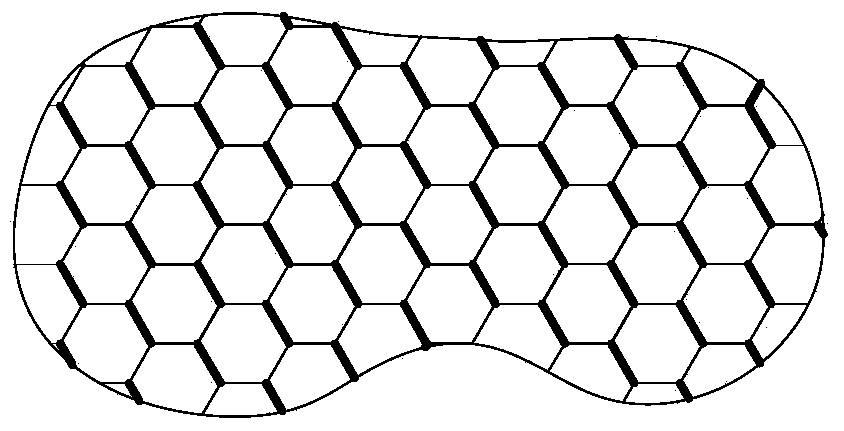Honeycombed laser scanning method for selective laser sintering
A laser sintering and laser scanning technology, which is applied in the field of additive manufacturing, can solve problems such as cracks and warpage of formed layers, and achieve the effects of improving dimensional accuracy, reducing workpiece deformation, and simple control
- Summary
- Abstract
- Description
- Claims
- Application Information
AI Technical Summary
Problems solved by technology
Method used
Image
Examples
specific Embodiment
[0039] A honeycomb laser scanning method for selective laser sintering, mainly comprising steps:
[0040] S1. According to the bounding box of the cross-sectional outline of the digital model of the part, a regular hexagonal regular arrangement and combination template is obtained, and the boundary line of the template is required to be completely outside the bounding box, such as figure 1 shown.
[0041] S2. Use the cross-sectional outline of the digital model of the part to cut the template, and obtain the template part located inside the outline, that is, the overall scanning path, such as figure 2 shown.
[0042] S3. According to the overall scanning path, the computer controls the laser beam to perform intermittent scanning along the direction of 120° with the x-axis to generate a series of intermittent scanning trajectories at 120° with the x-axis, such as image 3shown. The normal length of a regular line segment is 1 / 2 of its interval, namely L 4 =0.5L 5 , L 4 i...
PUM
 Login to View More
Login to View More Abstract
Description
Claims
Application Information
 Login to View More
Login to View More - R&D
- Intellectual Property
- Life Sciences
- Materials
- Tech Scout
- Unparalleled Data Quality
- Higher Quality Content
- 60% Fewer Hallucinations
Browse by: Latest US Patents, China's latest patents, Technical Efficacy Thesaurus, Application Domain, Technology Topic, Popular Technical Reports.
© 2025 PatSnap. All rights reserved.Legal|Privacy policy|Modern Slavery Act Transparency Statement|Sitemap|About US| Contact US: help@patsnap.com



